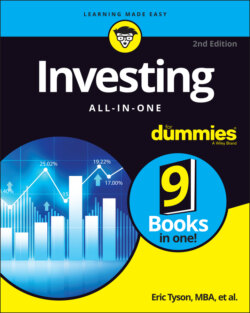Читать книгу Investing All-in-One For Dummies - Eric Tyson - Страница 48
Taking a company public: Understanding IPOs
ОглавлениеSuppose that The Capitalist Company (TCC) wants to issue stock for the first time, which is called an initial public offering (IPO). If TCC decides to go public, the company’s management team works with investment bankers, who help companies decide when and at what price to sell stock and then help sell (distribute) the new shares to investors willing to purchase them.
Now suppose that based upon their analysis of the value of TCC, the investment bankers believe that TCC can raise $100 million by issuing stock that represents a particular portion of the company. When a company issues stock, the price per share that the stock is sold for is somewhat arbitrary. The amount that a prospective investor will pay for a particular portion of the company’s stock should depend on the company’s profits and future growth prospects. Companies that produce higher levels of profits and grow faster can generally command a higher sales price for a given portion of the company.
Consider the following ways that investment bankers can structure the IPO for TCC:
| Price of Stock | Number of Shares Issued |
|---|---|
| $5 | 20 million shares |
| $10 | 10 million shares |
| $20 | 5 million shares |
In fact, TCC can raise $100 million in an infinite number of ways, thanks to varying stock prices. If the company wants to issue the stock at a higher price, the company sells fewer shares.
A stock’s price per share by itself is meaningless in evaluating whether to buy a stock. Ultimately, the amount that investors will pay for a company’s stock should depend greatly on the company’s growth and profitability prospects. To determine the price-earnings ratio of a particular company’s stock, you take the price per share of the company’s stock and divide it by the company’s earnings per share.
In the case of TCC, suppose that its stock is currently valued in the marketplace at $30 per share and that it earned $2 per share in the past year, which produces a price-earnings ratio of 15. Here is the formula: $30 per share divided by $2 per share equals a price-earnings ratio of 15.
